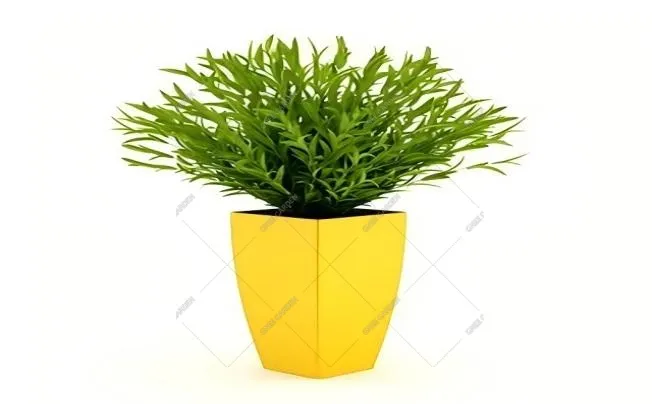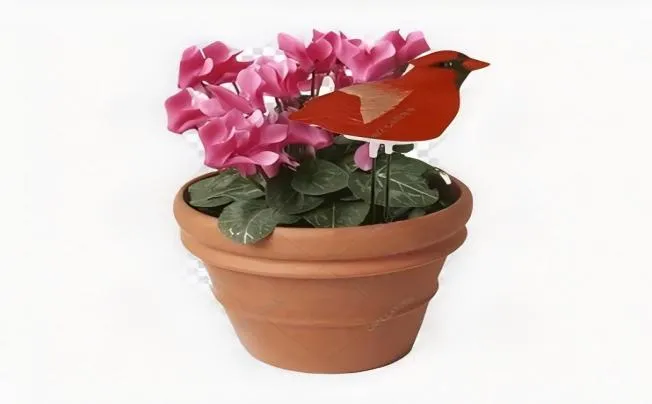What Is The Ideal Flower Pot Size?
Selecting the ideal flower pot size can give the plant roots the ideal amount of room to spread out, guarantee a fair supply of water and nutrients, and take both aesthetics and functionality into consideration.
What determines flower pot size?
Plant species
One important consideration while choosing the size of flower pots is the type of plant. For instance, the majority of succulent plants have small, immature root systems. For instance, a tiny thumb pot can satisfy the initial growth requirements for Bear's Paw and Rainbow Jade. The diameter is roughly 5-8 cm, which emphasises its beauty and charm while also guaranteeing that the roots have a specific amount of room. Since they mature slowly, switching to a flower container that is 10 to 15 cm in diameter is sufficient. If it's too big, water can easily build up and cause the roots to rot. During the seedling stage, a pot diameter of 7–10 cm is sufficient for herbaceous flowers, annual petunias, pansies, etc. Perennial peonies and irises require a pot with a diameter of 20-30 cm and a depth of 30 cm or more in order for their thick underground rhizomes to stretch freely, produce new buds, and bloom flowers year after year. Once they reach flowering, they must be moved to a pot that is 12-15 cm in diameter. This will allow the root system to expand and support a large number of flowering needs. Small shrub roses and other woody plants can be started in pots that are around 20 cm in diameter. Large osmanthus and white orchids require pots that are at least 50 cm in diameter and 40–50 cm deep, which provide a strong foundation for the roots deep underground and guarantee the plants' healthy growth. When the plants reach maturity, it is challenging to support their lush branches, leaves, and flowering period without a pot that is 30–40 cm wide and of comparable depth.

Size of the plant
There are clear variances in the pot size needs of plants at different stages of growth. The plants' roots are short and delicate while they are seedlings. A small container with a diameter of 7 to 9 cm can give seedlings like tomatoes and peppers enough room and the ideal amount of soil—which is breathable and moisturizing—to support the growth of new roots. The young roots will decay quickly if a large container is used at this time because there will be too much dirt and it will be difficult to dry for a long time after watering. As the plant matures, its branches and leaves become lush, and its root system becomes robust and durable. When an adult green radish's original small pot is no longer able to support it, for instance, it must be moved to a 15-20 cm or even larger pot to provide the root system more room to spread out, absorb more nutrients, and continue the plant's robust growth. The roots will become tangled in a limited area and the new roots won't be able to spread out if the pot isn't replaced. The plant will eventually stop growing, its leaves will turn yellow, and there won't be many blossoms.
Features of the roots
The selection of pots is mostly dictated by the root characteristics. Shallow-rooted plants, like Lithops among succulents and certain cacti, grow primarily horizontally and have roots that are dispersed across the soil's surface. To allow for easy root breathing and prevent water buildup, they require pots that are slightly wider but shallower—10 to 15 cm deep and 15-20 cm in diameter. A high-tube pot with a depth of roughly 30 cm and a diameter of 15-20 cm is ideal for deep-rooted plants with long, deep roots, including orchids and Clivia. in order for the roots to securely take root, develop vertically downward without obstruction, receive water and nutrients from the deep soil, and sustain the plant's erect posture and flowering requirements. For shallow-rooted plants, a deep pot will keep the bottom soil moist for a long time, which will cause the roots to rot from a lack of oxygen; for deep-rooted plants, a shallow pot will cause the roots to curl up, the plant to grow poorly, blooming will be difficult, and it will even slowly wither.

Accurate measurement to select the right flower pot
Accurate measuring is essential when selecting a flower pot.
Measure the plant's crown width, or the maximum breadth of its horizontally growing branches and leaves, if it is already there. In general, the flower pot's diameter can be between one-third and one-half of the breadth of the crown. Select a flower container with a diameter of 20 to 25 cm for indoor green plants with a crown width of 30 cm. This will guarantee aesthetic appeal and provide growth room.
In order to allow for future root growth, the diameter of the new flower pot should be at least 3-5 cm larger than the root group, the height should be 5-10 cm greater than the root length, and the plant should be carefully removed from the original pot (if this is difficult, water it thoroughly first). If the root system is tightly coiled, the root distribution range should also be checked.
To determine the size of the mature plant, look at the variety information for recently purchased seedlings. Select a flower pot in the early stages that is significantly smaller than the anticipated width of the full crown. For instance, use a pot that is 3–5 cm in diameter for little succulent seedlings. Change the pot gradually as the seedlings get bigger using the aforementioned technique so that the plant can live "comfortably" through all growth stages and begin its path to robust growth.

Selected Blogs
-
What customization services are available for metalworking customization?
2024-12-12
-
What Is The Difference Between A Plant Container And A Raised Bed?
2024-04-23
-
Garden Screening & Fence Panels
2024-04-23
-
Gardening pot selection tips
2024-04-17
-
The function and collocation of horticultural fire pot
2024-04-17


